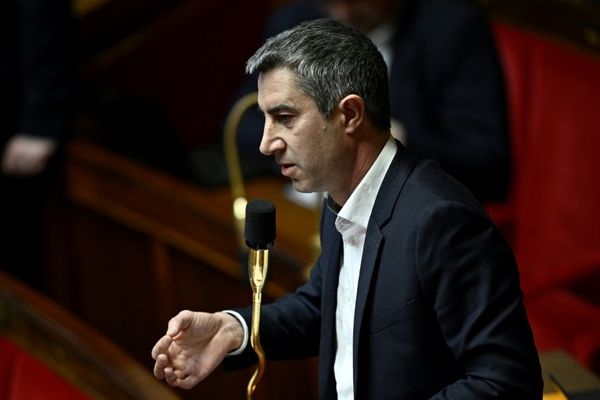
The great African American educator and activist Booker T. Washington began his autobiography, published in 1901, with the simple phrase, “I was born a slave on a plantation in Franklin County, Virginia.”
Washington, the son of a slave born on an unknown date, was a political titan and a dominant voice for former slaves and their descendants in post-abolition America at the turn of the twentieth century.
Marked by his experiences of being born enslaved, whereas his contemporaries W.E.B. Du Bois and James Weldon Johnson were born free, Washington’s autobiography, Up from Slavery, has a soul-stirring account of him remembering his mother, “tears of joy ran down her cheeks” as she embraced and kissed her children when all slaves were declared free after a reading of the Emancipation Proclamation in 1863.
The American chapter of chattel slavery — the legal ownership of a person by another as if the person is property of the other — ended with President Abraham Lincoln’s Proclamation and the ratification of the Thirteenth Amendment to the U.S. Constitution in 1865. The American experience thus formed a link in a long chain of key anti-slavery events in the nineteenth century, from the abolition by the United Kingdom in 1807 to Brazil in 1888, the last country in the Americas to do so.
Present Tenor of Slavery
That the formal abolition of slavery took place some more than a century and half ago does not mean the tenor of slavery rings quietly in the present day. U.S. President Biden’s inauguration speech in January 2021 built on the Emancipation Proclamation, importing its call of freedom and unity to a divided capitol. Across the Atlantic, the statue of slave-trader Edward Colston was pulled down in Bristol by anti-racism protesters in June 2020, sparking a nationwide discussion on what to do with such public monuments of former slaveholders.
In recent months, international pressure has mounted over the human rights situation of the Uyghur minority in the Xinjiang Autonomous Region of western China, which has brought the forced labor of Uyghurs into the spotlight of governments, businesses, and consumers. For international brands with their long global supply chains, production involving forced labor can be a serious issue of legal liability, as well as a considerable reputational damage risk.
The risks are best embodied by cotton produced in Xinjiang, which alone represents a staggering one-fifth of the global cotton supply. Xinjiang’s cotton reaches consumers worldwide through international clothing brands. The broad presence of Xinjiang’s cotton in the global textile industry means that we probably have garments in our wardrobe with cotton from there.
In response, the Chinese state media machinery has countered with images, contrasting the chattel slavery of the American South that enslaved persons like Booker T. Washington and his mother with contemporary images of Xinjiang cotton fields. These juxtaposed images are jarring and are meant to serve a narrative that there is no slavery in today’s Xinjiang.
And there China would be among the community of nations. There is no jurisdiction left in the world that still formally tolerates a situation where a human person can be legally reduced to being someone else’s possession. In 1981, the North African country of Mauritania became the last country in the world to abolish slavery, later criminalizing slavery in 2007.
Global Exploitation Post-Abolition
But the global abolition of chattel slavery is not the end of appalling human exploitation. For long, the study of slavery has centered on abolition, the singular moment of emancipation, dividing the “old slavery” of ownership from other forms of labor exploitation (“new slavery”) that followed. What is clear is that abolition was not the end of slavery but the mere beginning of another chapter of exploitation.

One of the most painful chapters of this post-abolition history involves the transportation of approximately 1.5 million Chinese male laborers between 1847 and 1874 from south China to the Americas under a contract system that bonded them to their employers in what is sometimes referred to as the “coolie trade.” Key destinations were Cuba and Peru in the New World, since their local economies depended heavily on labor-intensive agricultural cultivation. Cotton was an important crop, along with sugar, coffee, and tobacco.
Although not chattel slavery in name because the men would be considered free after the agreed period of work was reached, in reality the system ensured that Chinese men filled the labor vacuum left by the freed African slaves. Like the dangerous transatlantic Middle Passage, many Chinese laborers perished on the overcrowded ships taking them to the New World, owing to thirst, hunger, disease, and physical punishment.
The mortality rate of the Chinese workers on the plantations of Cuba and Peru was exceptionally high. Over half the Chinese men brought to Cuba died before reaching the conclusion of their eight-year contracts. In Peru, less than a third of the newly-arrived Chinese laborers reportedly lived out their term of service. Furthermore, contracts could be traded and sold, leading to a system of heinous abuses that “was slavery in every social aspect except the name.”
This distinction between “old” and “new” slavery is reflected in the two key international treaties on slavery: the 1926 Slavery Convention and the 1956 Supplementary Convention which tackles “institutions and practices similar to slavery.” Essentially, the concept of slavery from the 1926 Slavery Convention was expanded to include practices and institutions outside the traditional concept of the African slave trade. Collectively termed practices of “servile status,” the four new forms of slavery addressed by the 1956 Supplementary Convention were debt bondage, serfdom, certain practices of gender discrimination, and the exploitation of child labor.
Forced and Compulsory Labor
Forced labor in international law intersects and is closely related to the prohibition of slavery. Both forced labor and slavery impose significant restrictions on an individual’s freedom and enjoyment of the fruits of his or her labor. Forced or compulsory labor is defined by the International Labour Organization (ILO) Convention No. 29 of 1930 as “all work or service which is exacted from any person under the menace of any penalty and for which the said person has not offered himself voluntarily.”
The issue of forced labor in the cotton sector is not new. For example, reports began to emerge in the late 2000s of the persistent use of child and forced labor in the cotton sector of the Central Asian country of Uzbekistan, the world’s sixth largest cotton producer. According to a 2009 report from SOAS, six rural districts surveyed in Uzbekistan found between 86 to 100 percent of schools were subject to compulsory recruitment of children between the ages of 11 and 14. The children worked, at the cost of schooling, picking cotton “between 51 and 63 days without weekend breaks and under detrimental sanitary, health and nutritional conditions.” In 2014, the Uzbek government reportedly did not systematically mobilize children but forced more than a million people to harvest cotton, as pressure was placed on adults to work.

16, 2002.
In Uzbekistan, brands and international organizations such as the ILO have worked together to secure commitments from the government to implement structural reforms in its cotton industry. This is largely due to the highly visible campaign of the “Uzbek Cotton Pledge” since 2007, where undersigned companies (currently at 313 signatories) commit to ensure that they do not knowingly source Uzbek cotton until the government ends the practice of forced labor in its cotton sector. The results must then be independently verified by the ILO. Recently, the government has begun to float the idea of ending the boycott against Uzbek cotton. Though this is not yet clear, cotton activists have noted that “it has become easier for the two sides to talk to each other [and that] ‘a real exchange of views that feels like it’s moving toward outcomes.’”
State Imposed Forced Labor
There are parallels in reports of the use of forced labor in the harvesting of Uzbek and Xinjiang cotton, a practice that the government contends is actually vocational training. For instance, there were earlier reports of local authorities in Xinjiang requiring schoolchildren to engage in long and unpaid labor during the annual cotton harvest in September and October, under the ambit of work-study programmes. In December 2020, a report by The Guardian noted that while mechanized harvesting has increased (areas under the local production enterprise Xinjiang Production and Construction Corps have increased mechanical harvesting to around 83 percent), “areas in the south of Xinjiang – which produce a far larger share of the cotton – remain heavily reliant on manual picking.” A 2019 report by the China Institute of Wealth and Economics of Nankai University also referred to the seasonal nature of the cotton picking in southern parts of the province.
While Uzbek cotton serves in some respects as an antecedent to the current controversy over Xinjiang and forced labor, the uncomfortable situation is that Xinjiang cotton has shone a harsh light on not only forced labor, but that of state imposed forced labor (SIFL) and the inability of the international community — broadly meant to refer to states, regional organizations, civil society, and businesses — to mobilize collectively and coherently when the state at focus is a permanent member of the Security Council and the world’s second largest economy, after the United States.
The 1930 Forced Labour Convention of the ILO was followed in 1957 by the Convention on the Abolition of Forced Labour (Convention No. 105), which focused on the types of forced labor imposed by the state. It obliges States Parties to the convention to secure the immediate and complete abolition of forced or compulsory labor imposed directly by the state as (1) a means of political coercion, labor discipline, or racial, social, national, or religious discrimination; (2) a method of mobilizing labor for economic development; and (3) punishment for having participated in strikes.
To date, more international experiences and attention have been devoted to eliminating forced labor in the private economy. Efforts to deal with SIFL in a way that is constructive and based on engagement have proved more difficult when the usual avenues of stakeholder cooperation with civil society and trade unions are not readily available inside the country (as also seen in Myanmar and North Korea) and may even raise personal security concerns for those who participate from abroad. Lessons learned from the SIFL situation of Uzbek cotton are limited in their cross-border application when it is overlaid over a situation that many governments (Canada, Netherlands, U.K., and U.S.) have found makes a credible case of genocide.
Historical Dissonance
In light of the disconnect that often exists between the global history of chattel slavery and contemporary forms and reports of human exploitation, efforts are being made by scholars and practitioners to thread the history of slavery and of its abolition with practices that followed with similar exploitative and debasing effects, including the present-day discourse on human trafficking and modern slavery.
In many ways, trafficking in persons, codified in international law by the adoption of the Protocol to Prevent, Suppress and Punish Trafficking in Persons, Especially Women and Children under the UN Convention against Transnational Organized Crime in 2000, lends well to such a holistic and historical approach. This is because the international definition of trafficking in persons addresses a wide spectrum of exploitation that includes, at a minimum, “forced labour or services, slavery or practices similar to slavery [and] servitude,” amid sexual exploitation and the removal of organs (Article 3).
This has led to scholars, like the renowned Indian Ocean slavery historian Richard B. Allen, to call for us to collectively have a more nuanced examination of human trafficking and the exploitation that it entails, by “abandon[ing] the conceptual and other blinders that hinder our ability to understand the human experience with chattel and bonded labor, both past and present, in all of its challenging complexity.”
The complexity, as epitomized by the dichotomy in the representation of slavery and cotton across continents and time, is deeply difficult. It requires all of us to understand the inhumanity of chattel slavery, re-think the origins of systems of social inequality (in the words of David Graeber and David Wengrow), and reflect on how the long road towards legal abolition was only the start of other forms of indentured labor migrations in the centuries that followed. The shadow of human exploitation cast by slavery is long, but it is essentially one of violations of fundamental human and labor rights.
International Labour Organization
The 1998 ILO Declaration on Fundamental Principles and Rights at Work sets out four specific categories of labor rights and eight corresponding conventions that are held to be foundational for persons to fully achieve their human potential: the abolition of child labor; elimination of discrimination in employment and occupation; freedom of association and collective bargaining; and the elimination of forced or compulsory labor.

Both the two ILO Conventions of 1930 and 1957 on forced labor are pillars of this international labor framework that seeks to bring about the global reality of Article 4 of the Universal Declaration of Human Rights: “No one shall be held in slavery or servitude; slavery and the slave trade shall be prohibited in all their forms.” To date, China has not yet ratified these fundamental ILO conventions on the elimination of forced or compulsory labor, in addition to the two conventions that address the freedom of association and collective bargaining.
Totality of Commitment Across Time and Place
In January 1863, when Abraham Lincoln signed the Emancipation Proclamation that set slaves free in the United States, he apparently said: “If my name ever goes into history, it will be for this act, and my whole soul is in it.”
Perhaps President Lincoln had a sense of foreboding of the enormity of the challenges that laid ahead of emancipation. Not only in America and on the crop of cotton, but that the legacy of appalling human exploitation would linger and find traces in various commodities, in different regions and countries, but always difficult and with the potential to divide. “I should be damned in time and in eternity,” he replied when he came under political pressure to rescind the Proclamation.
Now, two centuries later — after all the tumultuous events in our modern history that saw two world wars, the founding of a new post-war world order, decolonization, men on the moon and a regulated system of global trade with multi-tiered supply chains — if we are and remain at this rancorous point of not seeing eye-to-eye internationally on the meaning of labor exploitation and the ways to combat it, then our whole soul has not been in anti-slavery. Past the cacophony, it is never too late to start anew.
READ NEXT: The EU-China Investment Agreement Is a Missed Opportunity To Advance Business and Human Rights
TNL Editor: Nicholas Haggerty (@thenewslensintl)
If you enjoyed this article and want to receive more story updates in your news feed, please be sure to follow our Facebook.







